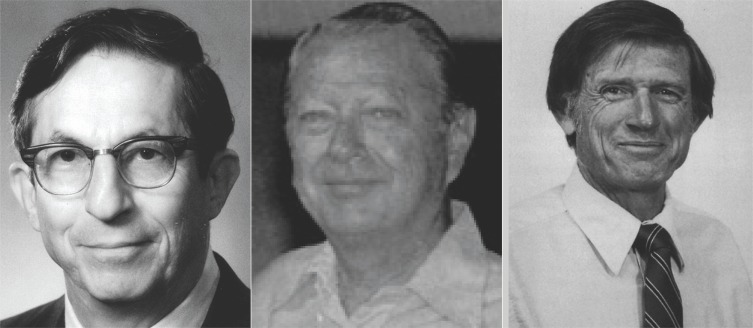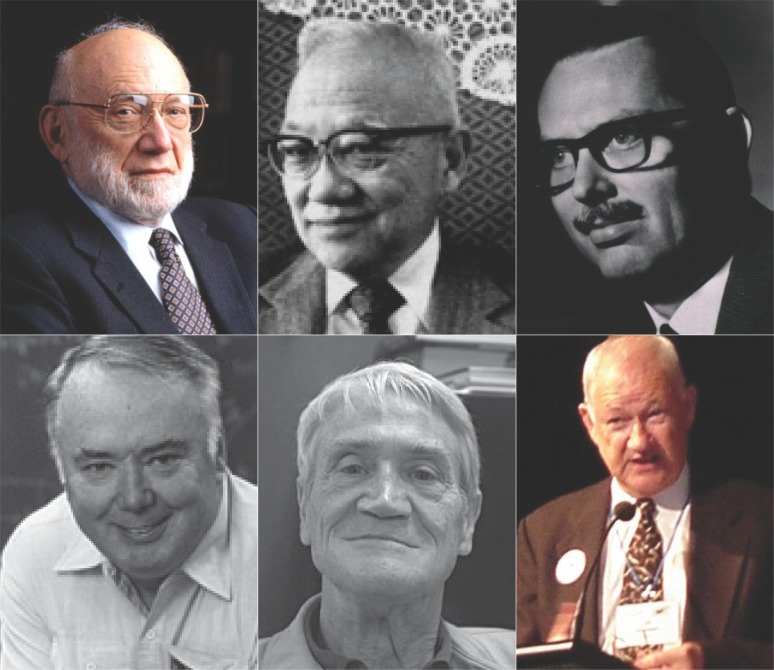Abstract
Medical informatics, as scientific discipline, has to do with all aspects of understanding and promoting the effective organization, analysis, management, and use of information in health care. While the field of Medical informatics shares the general scope of these interests with some other health care specialities and disciplines, Medical (Health) informatics has developed its own areas of emphasis and approaches that have set it apart from other disciplines and specialities. For the last fifties of 20th century and some more years of 21st century, Medical informatics had the five time periods of characteristic development. In this paper author shortly described main scientific innovations and inventors who created development of Medical informatics.
Key words: Medical informatics, development, history.
1. DEVELOPMENT OF METODS OF MEDICAL INFORMATICS
Development of Medical informatics started in the fifties of 20th century, first in USA, later in Europe and developed Eastern countries. Development of Information and Communication Technologies (ICT) was very important for development of Health and Medical informatics in all scientific biomedical fields and practicaly in all sectors of healthcare protection (1-5). The decrease of hardware price and wide availability of personal computer (PC), led to the formation of particular application and problem solving under the control of users. Decentralized structure of the contemporary medicine with lots of specialization favors such tendency (6-10). The computers become more and more the integral parts of the medical equipment (for example, computerized tomography-ct), more and more of pcs we see at the ambulance and clinics which are being used for surgeries and clinics being used for monitoring of mini documentation for the needs of expert work and scientific researcher or for the interpretation of signals. Such peripheral applications do not favor including into central approaches as net nodes or in the peripheral stations of the central systems, so the users collect the fruits from the general field of informatics, they are not getting rich with achievements of the new method of the medical informatics (11-25).
The development of own methodology is the characteristics of the new science. However, the medical informatics does not use the unique methodology. Particular applications in the medicine have lead to the mixture of interdisciplinary methodologies and application of formal methods at empiric discipline.
The medical aspects of the methodologies which they consider necessary for the creation of the medical informatics as scientific discipline are as follows (1, 7):
Tests evaluation data collecting method regarding to the objectivity, sensitivity,confidence and value;
Analysis of data informational contents;
Analysis and formal treatment of medical opinion and actions;
Evaluation of usefulness of medical decisions and actions;
Regulation of the theoretic concept of causative interrelation between the objects and processes;
System analysis in health care: modeling and simulations.
By connecting medical science and disciplines with technologies, as well as disciplines in information and computer sciences, creates the methodologies by means of which those technologies and disciplines can contribute to the adequate use of medical knowledge basis and providing better health protection. It should also be noticed that with the use of medical informatics methods, those technologies which get into the composition of wide field of the medical informatics are being reexamined, such as the evaluation of diagnostics technologies (by computer supported or non supported) and the evaluation of the informational system.
2. INTRODUCING OF COMPUTERS APPLICATIONS IN THE MEDICINE AND HEALTHCARE PROTECTION
The development of contemporary medical documentation was followed by advancement of data method processing. The real application of informatics on health care activity dated only some decades backwards and appeared in the time of computers devices and electronic computers development (1, 4, 6, 7, 16, 20). The first expert article in which the idea about application of computer technologies in the medicine was presented by Robert S. ledley and Lee Browning lusted (1959), and that article was considered to be the basic literature from the field of the medical informatics (1, 4). In the mentioned article the authors mediate about medical application of the electronic computers in the diagnostics and therapy, establishing theoretic foundations for medical decisions be means of computers. Therefore the beginning of the medical informatics connect for the fifties years of 20th century, in which is fertilized the appearances of the first commercial electronic computers and their application in the field of medicine.
Since those years and till today has increased the number of information; came to the exponential growth of knowledge; also the number of scientists and researches has increased, and the science has become the real industry of the modern world which uses the contemporary electronic technology on the market of ideas. On the electronic technology has begun, also, to base the contemporary medical equipment, and in the practice are developing the numerous health care information systems, as well as mighty bases of the bibliographic information of the medical literature. The informatics age has strongly splashed the medicine.
3. FIVE PERIODS IN DEVELOPMENT OF MEDICAL INFORMATICS
For the last fifties and some more years of Medical informatics development the five time period are characteristic (1, 4, 6, 7, 18):
The first period from 1955 till 1965 mainly is characterized by experimenting, and the studying of the new technologies in the medicine. The pioneers of medical informatics are Joshua lederberg and William S. yamamoto who early showed interest in automatic calculation in the forties of the 20th century. The important work of Robert S. Ledley (1906-), as the first medical professional working with the first computer of the pre-transistor era seac on the development of new computing methods in the field of symbolic logics is described, leading later to his famous work with Lee Browning Lusted (1922-) in automatic medical decision making. Another important step in medical informatics history was the development of bmdp software (Biomedical Programs) by Wilfrid J. dixon (1915-2008) and collaborators, allowing the use of computers in biostatistics. As the first project in the field of computerized diagnostics, resulting from an incentive of Arthur E. rickli, Cesar A. caceres and Hubert V. pipberger developed a method for automatic analysis of electrocardiograms. The introduction of arpanet, inovated by Timothy John Berners-Lee (1955-) an early forerunner of Internet, is noted as an important step for development of computerized medical applications. The history of the development of health information systems, computerization of clinical laboratories, computerized medical records, automated multiphase health screening is presented.
The names as G. Octo barnett (1930-) from the Massachusetts General Hospital, Wesley Allison clark (1927-)and Charles molnar (1935-1996) from the Massachusetts Institute of Technology, William Edward hammond from the Duke University, Lawrence L. weed from the University of Vermont, Morris F. collen (1913-) from the Kaiser-Permanente Medical Care, and others are mentioned (Figure 1 and 2). The National institute for health care in usa (nih) in 1960 founded the Advisory committee for the computer application in the researchers (accr) with significant material investment of money (about 40 million dollars), induced the development in the field of automatization of the medical health care services, of modeling and simulation, equipment and instrumentarium, recognition of samples, training in biomedical of literature. That was the strong stimulus to the rapid development of the medical informatics, first of all in usa, and then in the whole world. In this period appeared also the first prototype of the clinical information system (bis) in El Camino Hospital in California.
Figure 1.
Robert S. Ledley (1926-2012), Lee Browning Lusted (1922 -), Octo G. Barnett (1930-).
Figure 2.
Joshua Lederberg (1925-2008), William-Yamamoto (1946-), Wilfrid J. Dixon (1915-2008), Charles Molnar (1935-), Wesley A. Clark (1927-), William E. Hammond (1948-).
The second period from 1965 till 1975 characterizes the numerous invention activities of adequate solutions for the automatized data processing. By the end of the sixties West European countries were establishing the numerous hospital information systems. Firstly, medical equipment with built in computers were applied. The new biomedical engineer disciplines were developed; new diagnostic methods and therapeutic procedures based on the micro processing technology were introduced. The development of medical informatics in Europe was presented, describing the pioneering role of Peter L. Reichertz (1930-1987) in Germany and François Grémy (1929-) in France. First hospital information systems in Europe were implemented during the late sixties in Sweden (Danderyd and Karolinska Hospital), Great Britain (Kings Hospital in London) and Germany (Medizinische System Hannover). In 1979 the first Nobel Prize in physiology and medicine was given for an achievement in medical informatics, the computer tomography – the laureates were Godfrey N. hounsfield (1919-2004) and Allan M. cormack (1924-1998). Computer assisted medical decision making started to develop significantly in the seventies in usa with the consultation system help of Homer R. warner and collaborators. In early seventies the development of artificial intelligence methods and expert systems was noted. In this connection, presented were the systems dendral of Edward feigenbaum, Bruce buchanan, Joshua lederberg (1905-2008) and Carl djerassi (1923), internist-I of Jack D. myers (1914-1998) and collaborators, casnet of Kasimir A. kulikowski (1944-) and Sholom M. weiss, mycin and oncocin of Edward H. shortliffe (1947-) and collaborators, cadiag-2 of Klaus-Peter adlassnig (1950-), kardio of Ivan bratko and collaborators. (Figure 3, 4 and 5).
Figure 3.
Allan Cormack (1924-1998), Godfrey N. Hounsfield (1919-2004), Jack D. Myers (1914-1998).
Figure 4.
Eugene Garfield (1925-), Edward Shortliffe (1947 - ), Bruce Buchanan (1935-).
Figure 5.
Casimir A. Kulikowski (1944-), Klaus Peter Adlassnig (1950-), Carl Djerassi (1923-).
The third period from 1975 till 1985 year is significant with the progress of computer technique development when it became cheaper, which lead to very intensive development of the information system at all the levels of health care system, from the primary to the quaterly level. The interest for education by health workers grew being engaged by medical informatics. The expert and scientific assemblies from the field of the medical informatics become with time more and more numerous and assembled a lot of experts of all profiles, including also the significant number of doctor who began to engage in the medical informatics professionally. Important congresses were organized: eleven world congresses on medical informatics organized by International Medical Informatics Association–imia, founded in 1974 and twenty European congresses organized by European Federation of Medical Informatics–efmi, founded in 1977. In this period appear the (software) packages on market, becoming the profitable venture with the significant commercial effects. Only in usa, during those years, they had 25 producers for the health care information systems with year turnover between 5 and 7 milliard dollars. This period is characterized also by the appearance of personal computers at the world market with the perfected technical-technologic performances, especially by memory capacities, what enabled the powerful development of informatics in health care system. Besides, the intensive and mass application of personal computers opened the new possibilities-namely connecting computers from home ambulance directly to the informational systems in health care centers. The installation of terminals was being intensified by patient beds (bed side terminal), when medical nurses for their current tasks, and patients–if they are able to–had possibilities of correcting wrongly taken data.
The fourth period from 1985 to 1995 was the new phase of medical informatics development. And further was the development of health care informatics intensified and was meeting high standards through new manner enabling processing and standardization of knowledge. Intensive researches on improvement of methods and technique of artificial intelligence was conducted, and included development and application of expert system in medical diagnostics and therapy. The artificial intelligence was being introduced as separate discipline of medical informatics, and began to be used by numerous expert systems in practice, about which we will speak later. The hospital information systems, in this period, became more complex, more functional and more qualitative than the previous ones and supported greater number of hospital function. These systems were composed of more independent modules integrated by contemporary communications into unique system which supported all functions of a health care organization regardless to its size and complexity. Formerly built in information systems they Integrated primary health care (isphc) and hospital information systems (his) into complex systems both on regional and national level. Such approach showed significant advantages in the development of his., Especially intensive connection of hospitals with private doctor surgeries by computer technologies was seen in usa. In recent years, the clinical information systems (“Clinical Departmental Systems”) with applications into his are being developed supporting connection of a patient and definite medical specialization, supporting decisions making in every day medical work.
The fifth period, from 1995 to present, development of medical informatics cannot be separated from development of computer technologies. With regard to this, we have to emphasize the fact once again, that the area of the medical informatics significantly grows wider than just the application of electronic computers, although the technical development of microprocessor and telecommunication technologies are significantly inf luenced by the development of the medical informatics and cannot be imagined without electronic computers. At the beginning the technical foundation (“hardware”), is necessary for support of informational systems development, and was unimproved and inadequate so that the beginning of applications in this region were modest and limited. In the meantime, however, accounting and computer technologies immensely advanced. For example, the appearance of electronic computers with network of terminals significantly inf luenced integration of informatics methods into medical segments in health care work sites, which was the basis for development of health care information systems in all segments of health care activities. Investment in huge material means of payment and adequate human potentials in this high specialized development, resulted with significant improvements of hardware and software technologies, mostly in the domain of projecting on basis of high quality language of the fourth and fifth generation of computers. All this brought to the expansion the use of microprocessor technology in the diagnostic systems, and expansion of technology usage brought to wider use of microprocessor technologies and led to so called “information revolution” of our time, resulting in application of informatics methods in doctor surgery, building of informatics equipment, instrumentation and prostheses.
Behind us is five generations of computers, and already considerably is being done upon the sixth generation, of which hardware basis makes the “biochip” as a foundation of microcomputers. This is completely new technique which, according to many, approaches to physiologic mechanism of neurosynapsis in human brain. The contemporary informatics technology enables current realization of Lusted and other pioneers idea for medical computer application, especially in the domain of medical decisions making. By this the medical informatics becomes the basic discipline of nowadays medical science and practice.
CONFLICT OF INTEREST
NONE DECLARED.
REFERENCES
- 1.Masic I, Ridjanovic Z, Pandza H, Masic Z. Medical Informatics. Second edition. Sarajevo: Avicena; 2010. pp. 13–36. [Google Scholar]
- 2.Masic I. History of Informatics and Medical Informatics. Sarajevo: Avicena; 2013. pp. 59–98. [Google Scholar]
- 3.Masic I. A History of Medical informatics in Bosnia and Herzegovina. Avicena; 2007. pp. 3–26. [Google Scholar]
- 4.Masic I. A Review of Informatics and Medical informatics History. Acta Inform Med. 2007;15(3):178–188. [Google Scholar]
- 5.Masic I. The History and New Trends of Medical Informatics. Donald School J Ultrasound Obstet Gynecol. 2013;7(3):301–312. [Google Scholar]
- 6.Kern J, Petrovecki M. i sur. Medicinska informatika. Zagreb: Medicinska naklada; 2009. pp. 269–292. [Google Scholar]
- 7.Shortlife EH, Pereault LE, Wiederhold G, Fagan LM. Computer Applicationsin Health Care and Biomedicine. New York: Springerrlag; 2000. Medical Informatics; pp. 3–40. [Google Scholar]
- 8.Masic I, Ridjanovic Z. Medicinska informatika. Sarajevo: Avicena; 1994. pp. 269–292. [Google Scholar]
- 9.Masic I, Ridjanovic Z. Knjiga 1. Osnove Medicinske informatike. Sarajevo: Avicena; 1999. Medicinska informatika; pp. 195–220. [Google Scholar]
- 10.Dezelic Gj. Medicinski fakultet Sveucilista u Zagrebu. Zagreb: 1991. Zdravstvena informatika; pp. 53–56. [Google Scholar]
- 11.Bemmel van J, Musen AM. Handbook of Medical Informatics. Springer-Verlag; 1997. pp. 37–51. [Google Scholar]
- 12.Ball M, Lindberg D, Masic I. Special Tribute on Morris F. Collen: Charismatics Leader of Medical Informatics. Acta Inform Med. 2014 Feb;22(1):4–5. doi: 10.5455/aim.2014.22.4-5. doi: 10.5455 aim/2014.22.4-5. [DOI] [PMC free article] [PubMed] [Google Scholar]
- 13.Masic I, Pandza H. Praktikum iz medicinske informatike. Sarajevo: Avicena; 1999. pp. 5–22. [Google Scholar]
- 14.Mihalas G, Zvarova J, Kulikowski K, Ball M, van Bemmel J, Hasman A, Masic I, Whitehouse D, Barber B. History of Medical Informatics in Europe - a Short Review by Different Approach. Acta Inform Med. 2014 Feb;22(1):6–10. doi: 10.5455/aim.2014.22.6-10. doi. 10.5455 aim/2014.22.6.10. [DOI] [PMC free article] [PubMed] [Google Scholar]
- 15.Milinkic S, Masic I. Information technologies in the new millenium. Med Arh. 1999;53(4, sup.3):100. [Google Scholar]
- 16.Masic I. Primjena informacijskih tehnologija 21. stoljeca u medicinskim znanostima. Med Arh. 2000;54(1):59–61. [PubMed] [Google Scholar]
- 17.Zvarova J, Masic I. Medical informatics - an interdisciplinary approach. Med Arh. 1996;50(3-4):107–109. [PubMed] [Google Scholar]
- 18.Colen MF. IMIA Yearbook of Medical Informatics. 2006. Fifty Years in Medical informatics; pp. 174–179. [PubMed] [Google Scholar]
- 19.Dezelic Gj. Short review of Medical informatics history. Acta Inform Med. 2007;15(1):49–61. [Google Scholar]
- 20.Ball MJ, van Bemmel JH, Kaihara S. IMIA Yearbook of Medical Informatics. 2007. IMIA Presidential Retrospectives on Medical Informatics; pp. 165–175. [PubMed] [Google Scholar]







